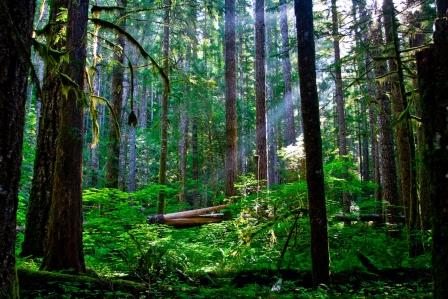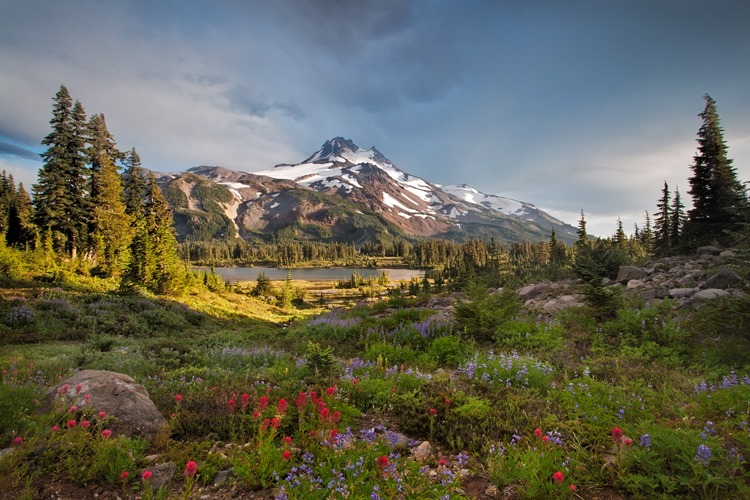Over the last four decades, Oregon Wild has done an immense amount of work on a variety of issues with the overriding goal of protecting Oregon's natural heritage. Here's a quick look at some of the highlights.
If you like what you see below, consider becoming a part of the effort to keep Oregon wild and make a gift today so we can continue our work.
See more detailed lists of our specific accomplishments from:

Omnibus Public Lands Management Act of 2009 Protected 127,000 acres of Wilderness and 83 miles of Wild and Scenic Rivers around Mount Hood and the Columbia River Gorge. Also protected the Copper Salmon Wilderness and the Soda Mountain Wilderness.
Protecting Endangered Gray Wolves (2005-present) Pushed for strong protections for Oregon's recovering gray wolf population including a landmark settlement following litigation by Oregon Wild and partners that led to a focus on non-lethal means of preventing wolf/livestock conflict. The settlement set the stage for the Oregon wolf population to grow while depredation incidents dropped.
Waldo Lake Protection (1984-2013) Secured permanent gas motor ban for all boats and floatplanes to maintain the purity and serenity at Oregon's gem of the Cascades.
Northwest Old Growth Forest Protection Campaign (1979-present) Helped nationalize the ancient forest issue and raised public awareness about the values of old-growth forests. Advanced protection for millions of acres of old-growth habitat through wilderness legislation, the Northwest Forest Plan, and the "eastside screens." Launched a campaign to secure permanent protection of mature and old-growth forests in the Northwest through federal legislation. Played a key role in negotiating the terms of the 2009 Oregon Eastside Forest Restoration, Old Growth Protection and Jobs Act, reaching an historic agreement with the timber industry to protect old-growth forest and pursue landscape-wide restoration on nearly 10 million acres across six eastern Oregon National Forests.
Roadless Area Protection and Conversion to Wilderness Proposals (1974-present) Includes coordination and litigation of the Roadless Area Review and Evaluation (RARE I and RARE II) process, promulgation of the Roadless Area Conservation Rule, and the Oregon Wild Campaign. A historic 1984 lawsuit broke the national logjam regarding the U.S. Forest Service's inadequate review of roadless lands and led to state wilderness bills across the country. Following years of litigation after its initial rollout in January 2001, the Roadless Area Conservation Rule has ultimately provided protection for 58 million acres nationwide, including 1.9 million acres in Oregon.
Klamath Basin Campaign (1994-present) Increased public awareness about the importance of protecting the Klamath Basin National Wildlife Refuges, wetlands, and threatened and endangered fish and wildlife. Fought for a balanced solution to Basin water crisis.

Bull Run Watershed Protection and Little Sandy Watershed Protection Act (1996, 2001) Increased protection for the clean drinking water source for over one-quarter of all Oregonians.
Oregon Resources Conservation Act of 1996 Protected Opal Creek Wilderness and Opal Creek Scenic Recreation Area (28,000 acres), added Elkhorn Creek to the Wild and Scenic River system, and designated the Oregon Island Wilderness Additions.
Oregon State Scenic Waterways Initiative and Oregon Omnibus Wild and Scenic Rivers Act of 1988 Protected nearly 1,500 miles of rivers.
Protected Wild Rivers and Salmon Runs Prevented the construction of major dams including Elk Creek Dam (now demolished) on the Rogue River system, Salt Caves Dam on the Klamath River, Walker Creek Dam on the Nestucca River system, and Asotin Dam on the Snake River.
Elevated Pacific Northwest Salmon Issue (1989-present) Through Endangered Species Act petitions, litigation and passage of the Oregon Riparian Protection Act and litigation.
Boosted Coastal Protections (1977-1989) Including a permanent ban on offshore oil and gas development, beach closures for motorized vehicles, and passage of Oregon Islands Wilderness Act.
Oregon Forest Wilderness Act of 1984 Protected 900,000 acres, including 828,000 acres of wilderness and the Oregon Cascades Recreation Area.
Endangered American Wilderness Act of 1978 Protected 285,000 acres in Oregon.
Hells Canyon Wilderness / National Recreation Area Act of 1975 Protected 660,000 acres, including 131,000 acres of wilderness.
Oregon Wild was known as the Oregon Wilderness Coalition until 1982 and then the Oregon Natural Resources Council until 2006. Many of these projects involved collaborative efforts by several environmental organizations; however, Oregon Wild spearheaded or coordinated those efforts. In many cases, Oregon Wild played a key role by filing lawsuits that helped spur legislation.

